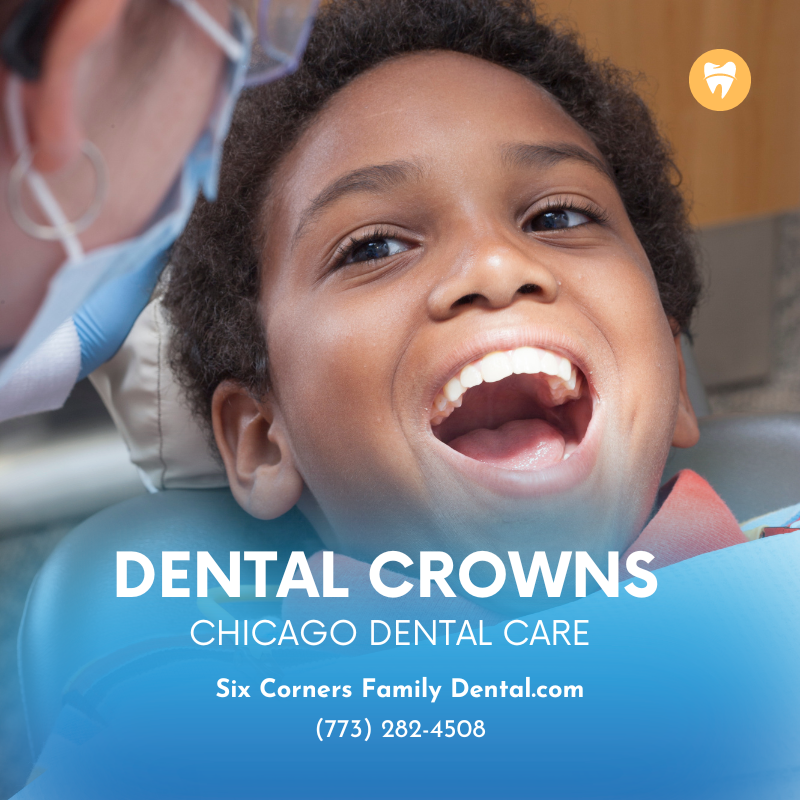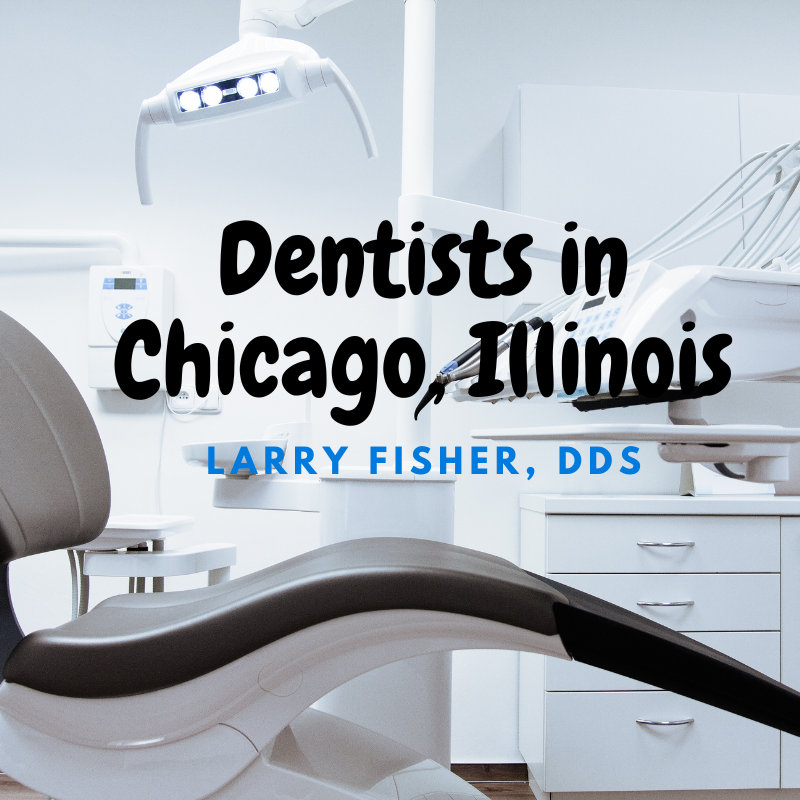Dental Crowns in Chicago – FAQs about Dental Crown Services
Have you ever heard of a dental crown? What Is A Crown For A Tooth is a common dental question we get. It’s a common term thrown around in the dental world, but do you really know what it is and why it’s used?
Well, let me break it down for you. A dental crown is essentially a cap that is placed over a damaged or decayed tooth. It’s like a little hat for your tooth, protecting and restoring its shape, size, and strength.
So, why would you need a dental crown? There are several reasons why a dentist like Larry A. Fisher might recommend one. First, if you have a tooth that is cracked, broken, or severely decayed, a crown can help prevent further damage and save the tooth from extraction.
Second, if you have a large filling or multiple fillings in a tooth, a crown can provide reinforcement and prevent the tooth from becoming weak or fractured. And finally, if you have a misshapen or discolored tooth that affects your smile, a crown can restore its appearance and give you back your confidence.

What Is a Crown for a Tooth
A tooth crown is a dental restoration that is designed to restore and protect a damaged or weakened tooth. It is a common treatment option used by dentists to repair teeth that have undergone extensive decay, fracture, or other forms of damage. In this article, we will take a closer look at what a tooth crown is, its purpose, different types available, the process of getting one, its benefits, proper care, and potential complications that may occur.
Definition of a Tooth Crown
A tooth crown, also known as a dental crown or a dental cap, is a custom-made prosthetic device that covers the entire visible portion of a damaged tooth. It is designed to restore the tooth’s shape, size, strength, and functionality. Tooth crowns are typically made of various materials, such as porcelain, metal alloys, ceramic, or a combination of these.
Purpose of a Tooth Crown
The primary purpose of a tooth crown is to protect and strengthen a damaged tooth. It provides a protective barrier that prevents further decay, fracture, or damage to the underlying tooth structure. Additionally, a tooth crown can improve the appearance of a tooth by enhancing its shape, color, and alignment.
It is also commonly used in conjunction with other dental procedures, such as dental implants or bridges, to provide a stable support for these restorations.
Types of Tooth Crowns
There are several types of tooth crowns available, each with its own advantages and disadvantages. Some common types include:
- Porcelain Crowns: These crowns are made entirely of porcelain, resulting in a natural-looking appearance. They are an excellent choice for front teeth due to their ability to blend seamlessly with the surrounding teeth.
- Metal Crowns: Metal crowns, such as gold or silver alloys, are known for their durability and strength. They are often used for molars and can withstand biting and chewing forces exceptionally well.
- Porcelain-fused-to-Metal Crowns: These crowns combine the strength of metal and the aesthetics of porcelain. They have a metal core for stability and a porcelain outer layer that matches the color of the adjacent teeth.
- All-Ceramic Crowns: These crowns are made entirely of ceramic or zirconia, and they are highly aesthetic and biocompatible. They are an excellent choice for patients with metal allergies or those who desire a more natural appearance.
Process of Getting a Tooth Crown
Getting a tooth crown typically involves multiple visits to the dentist. The Larry A. Fisher Chicago Dental Crown Process can be summarized as follows:
- Evaluation and Preparation: Your dentist will examine the damaged tooth and determine if a tooth crown is the most suitable treatment option. If so, the tooth will be prepared by removing any decayed or damaged portions. An impression of the tooth will then be taken to create a customized crown.
- Temporary Crown Placement: While the permanent crown is being fabricated in a dental laboratory, a temporary crown will be placed to protect the prepared tooth.
- Crown Fitting and Cementation: Once the permanent crown is ready, the temporary crown will be removed, and the permanent crown will be carefully fitted and adjusted for proper bite and alignment. Once the fit is perfect, the crown will be permanently cemented onto the tooth.
Benefits of a Tooth Crown
There are many benefits of getting a crown, we actually have a post detailing the 5 reasons to get a dental crown here. A new tooth cap or crown offers numerous benefits, including:
- Restoration of Function: A crown allows you to bite, chew, and speak comfortably, without any pain or discomfort.
- Protection of the Underlying Tooth: By covering the damaged tooth, a crown protects it from further deterioration, decay, or fractures.
- Enhanced Aesthetics: A crown can improve the appearance of a damaged tooth, providing a natural-looking result that blends seamlessly with the surrounding teeth.
- Longevity: With proper care and maintenance, a well-fitted crown can last for many years, providing long-term durability and functionality.
Caring for a Tooth Crown
To ensure the longevity and durability of your tooth crown, it is essential to practice good oral hygiene. This includes:
- Brushing and Flossing: Regularly brush your teeth at least twice a day with a soft-bristled toothbrush and fluoride toothpaste. Flossing should be done once a day to remove plaque and food particles from between the teeth and along the gum line.
- Regular Dental Check-ups: Visit your dentist regularly for professional cleanings and examinations. This allows your dentist to monitor the condition of your crown and identify any potential issues early on.
- Avoiding Damaging Habits: Avoid biting hard objects, such as ice, pens, or fingernails, as they can cause damage to your crown. Additionally, refrain from grinding or clenching your teeth, as this can put excessive pressure on the crown.
Potential Complications of a Tooth Crown
While tooth crowns are generally safe and effective, there can be some potential complications, such as:
- Sensitivity: You may experience temporary sensitivity to hot or cold substances immediately after getting your crown. This should subside within a few weeks.
- Allergic Reactions: In rare cases, an allergic reaction to the crown material may occur. If you experience any unusual symptoms, such as swelling, rashes, or difficulty breathing, contact your dentist immediately.
- Loose or Dislodged Crown: Occasionally, a crown may become loose or dislodged. If this happens, contact your dentist as soon as possible for evaluation and re-cementation if necessary.
Conclusion
A tooth crown is a versatile and effective dental restoration that can restore the function, appearance, and health of a damaged tooth. Whether you require a crown due to decay, fracture, or other types of damage, it is essential to consult with a trusted dentist who can provide expert advice and quality care.
As always, proper oral hygiene and regular dental check-ups are crucial in maintaining the longevity and durability of your tooth crown.
CHICAGO DENTAL POSTS
🦷 View our Dental Crown Guide & FAQ’s
🦷 5 Reasons People Need to Get Dental Crown
🦷 Chicago Dentistry for Children
Read more about Chicago Dental Crown Services


